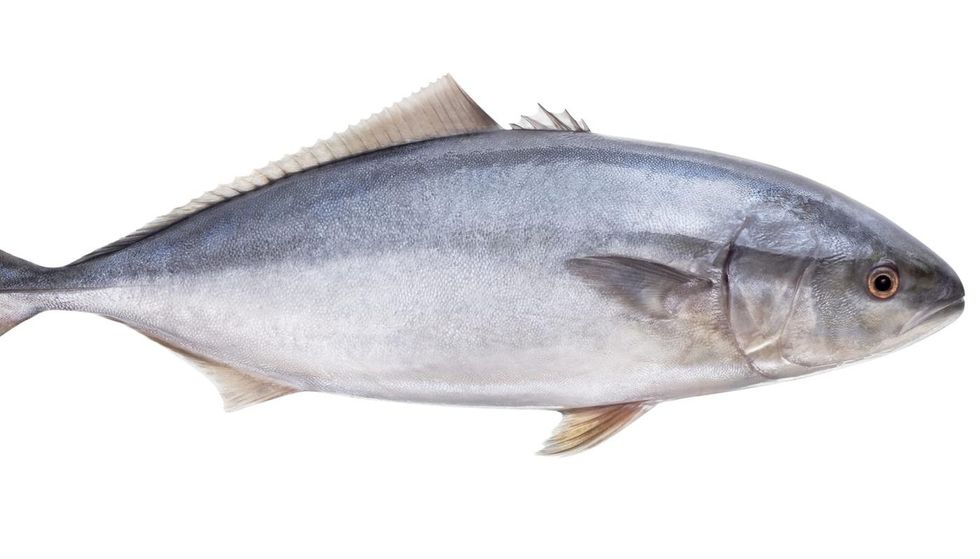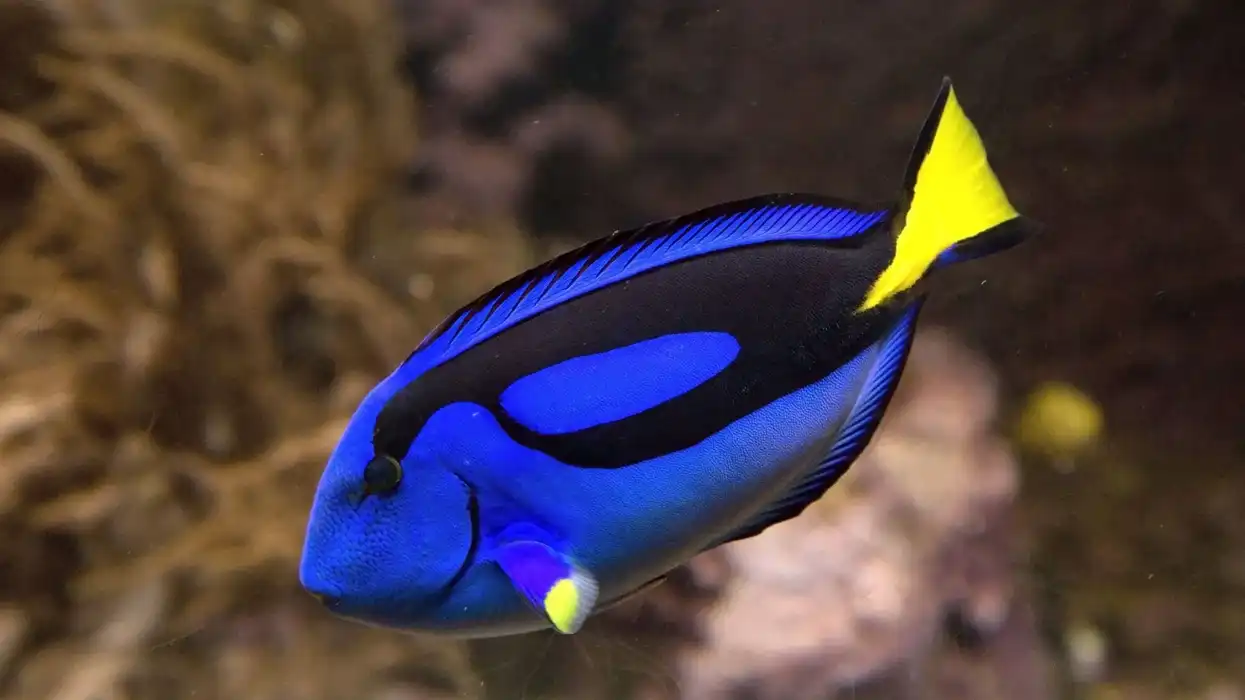The white tuna is also known as the albacore tuna. With a colloquial name that is justified by the color of its meat, the white albacore tuna is one of the most commercialized fish.
These fish generally school together and are referred to as pelagic predators or open-sea hunters.
Being medium-sized fish and hunters, even though they are not at the top of the food chain in their habitat and ecosystem, they are still not at the bottom.
IUCN marks the conservation status of the albacore tuna to be near threatened, which is merely a step away from being a threatened species. The buttery taste of this fish is loaded with omega-3 fatty acids, making it a healthy addition to your diet.
Read on to know more about the solid white albacore tuna. After reading these interesting facts about this species, do check our other articles on neon tetra and the great white shark.
White Tuna Interesting Facts
What type of animal is a white tuna?
The white albacore tuna is a fish, and its scientific name is Thunnus Alalunga. These tunas are widely found in the Atlantic Ocean, among other tunas and fish species.
This species is one of the most harvested fish because of its use in the culinary world. The buttery taste of this fish is loaded with Omega-3 fatty acids, making it popular with seafood lovers.
What class of animal does a white tuna belong to?
The white tuna belongs to the class of fish, specifically, to the class of Actinopterygii which encompasses all fish with ray fins and bony structures.
How many white tuna are there in the world?
At present, over a million solid white albacore tuna inhabit the world’s seas and oceans put together. They are grown in fisheries as well to cater to the demand in the restaurant industry.
Where does a white tuna live?
The solid white albacore tuna lives in oceans and seas. All over the world, white tunas are found specifically in the Atlantic Ocean, the Pacific Ocean, the coasts of California, Baja, Mexico, Washington, Oregon, Spain, and the Bay of Biscay.
What is a white tuna's habitat?
To begin with, the solid white albacore tuna can be found in oceans and seas up to a depth of 600 meters. These zones are called epipelagic and mesopelagic zones.
The average-sized white albacore tuna is most comfortable in waters that have temperatures within the range of 10- 25 degrees Celsius. However, larger solid white albacores have been found in deeper waters where the water temperatures are slightly warmer.
Who do white tuna live with?
The white tuna is a schooling fish species. This means that solid white albacore tuna usually live in groups that are made up of other white Albacore tuna or other types of tuna, and these groups are called schools or shoals.
How long does a white tuna live?
A white tuna’s average life expectancy is about 12 years of age.
How do they reproduce?
Albacore tuna, or white albacore tuna, prefer warmer waters for reproduction purposes. When fertilized, the female white albacore tuna usually releases up to 3 million eggs into the water.
Naturally, only a tiny percentage of these eggs hatch into baby white tuna. Having released the eggs into the water, the parents are no longer associated with their offspring.
The babies must learn to hunt and survive by themselves, and if they can manage to do so beyond the age of one year, their chances of survival are quite good. They reach the age of reproductive maturity by five years of age, following which the same process takes place.
What is their conservation status?
The IUCN marks the albacore tuna or white tuna species to be Endangered in terms of its conservation status, with only just over one million white albacore tuna existing in the oceans and seas all over the world.
White Tuna Fun Facts
What do white tunas look like?

Weighing about 72 lb (33 kg), the albacore tuna, or white tuna, features a ventral side that shines due to its silverish-grey scales. As you move to the dorsal, or upper, side, the silver transitions into a darker shade of grey or a dark shade of blue.
Now, the white albacore tuna is also often referred to as a longfin, the reason being its massive pair of pectoral fins. These are the most distinct features of a white tuna’s body.
How cute are they?
Albacore tunas are not cute, but they are pretty to look at in their natural habitat, especially when they swim in large schools.
How do they communicate?
The solid white albacore tuna, like most other types and species of fish, make use of their senses of vision and hearing and use chemical secretions to communicate. However, communication in albacore tuna is not a subject that has been studied extensively.
How big is a white tuna?
In terms of length, the average solid white albacore tuna grows to be as long as 3 ft 3 in (1 m). However, the maximum length possible for some white albacore tuna is 4 ft 7 in (1.4 m).
This means that an adult white albacore tuna would be, in terms of length and weight, the same size as a medium-sized dog.
How fast can a white tuna swim?
The solid white albacore tuna is known to be an excellent swimmer, thanks to its distinctively large pectoral fins. These longfins have been known to cover distances at a speed of nearly 50 mph.
How much does a white tuna weigh?
The average solid white Albacore tuna weighs about 72 lb (33 kg).
What are the male and female names of the species?
There are no specific names allocated to the members of Thunnus alalunga based on their sex. The males are referred to as male white tuna while the females are referred to as female white tuna.
What would you call a baby white tuna?
A baby white tuna is referred to as an offspring or juvenile.
What do they eat?
A solid white albacore tuna is what is known as a pelagic predator or an open sea hunter. This means its diet comprises different meats available to it in its natural habitat.
However, most other types of tuna feast primarily on smaller fish whereas the albacore tuna primarily consumes crustaceans and cephalopods.
They do eat fish, but not as much as other types of tuna. Though with a reading of 0.32 ppm, white tuna mercury content is somewhat higher and hence it is essential to eat this fish in moderation.
Are they eaten by humans?
Yes, super white tuna is consumed by humans. Solid white albacore tuna is one of the most popular dietary meats in the whole world, thanks to its highly nutritious meat which is loaded with fat and oil along with omega-3 fatty acids.
Would they make a good pet?
No, solid white albacore tuna would not make for good pets for two main reasons. The first one is that it is a fairly large fish to fit into an aquarium or a tank. Secondly, these fish being migratory species as well as hunters, require large spaces and their natural habitat to flourish.
Did you know...
The solid white albacore tuna is the only tuna that primarily eats cephalopods and crustaceans.
Albacore white tuna often group up with different tuna such as yellowfins, skipjacks, and bluefins, and create schools that can be as long as 20 miles.
White tunas eat more than 20 % of their body weight because of their extremely high metabolism.
The main predators of white albacore tuna are sharks, other tuna, billfish, and ray fish.
The solid white albacore tuna, at its age of sexual maturity, is only 3.3 ft long. It grows longer as it ages.
The white tuna’s life span changes from region to region with it hitting 13 years in the Atlantic Ocean and about nine years in the Mediterranean Sea.
The solid white Albacore tuna only breeds once a year in July through September in the northern hemisphere and October through March in the southern hemisphere.
When you compare solid white albacore vs white tuna, the comparison is essentially redundant because albacore is the only species of tuna that can be called white tuna.
When you compare white tuna vs tuna, then there is a clear difference in the appearance of their meat. The color of meat of light tuna is darker in color but more flavorful, fatty, and buttery as compared to white tuna. The same is the result of the analysis between light vs white tuna.
How does the white tuna hunt for prey?
The two main assets of the solid white albacore tuna when it comes to its hunting habits and prowess are its speed of swimming and its size.
At about 4.62 ft in length, there is no denying that the white tuna is a fairly large fish.
Adding to that its average speed of swimming, which is about 50 miles per hour or 80 kilometers per hour, makes the white tuna one of the most adept predators in its natural habitat.
Using their long fins and tail, the tuna spot their prey and use their big mouths to catch these cephalopods and squids, and other sea creatures.
The white tuna has also been known to be an active hunter at night rather than during the day.
How has human interaction affected white tuna?
The only real threat to the population of solid white albacore tuna in oceans all around the world is overfishing.
Fishermen, knowing the value of solid white tuna in the market, continue to catch fish in their regions without being mindful of their reproductive periods and population scarcities.
Not only is white Albacore tuna nutritious meat but also is delicious to eat and makes for countless delicacies in cuisines and cultures all around the world. The United States of America, for example, consumes solid white albacore tuna in the form of canned food to the extent of 1 billion pounds in weight.
This is why, despite being one of the top predators in its ecosystem, the white tuna’s global numbers are only about one million in total.
Even though it is not an endangered species yet, if these types of overfishing practices continue, the albacore tuna or solid white albacore tuna will soon be classified as an endangered species.
Here at Kidadl, we have carefully created lots of interesting family-friendly animal facts for everyone to discover! Learn more about some other fish including the skipjack tuna and the albacore.
You can even occupy yourself at home by drawing one of our white tuna coloring pages.










